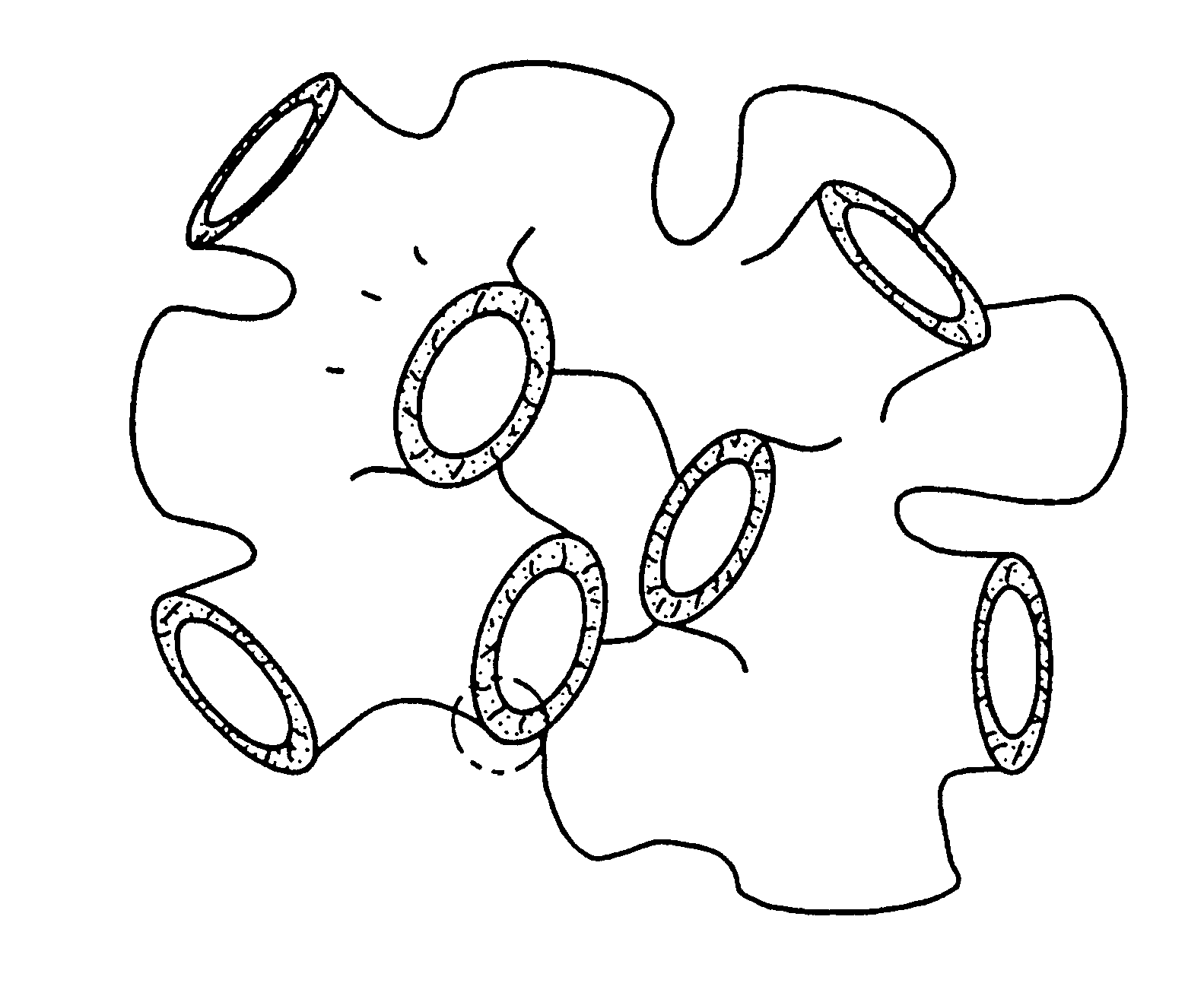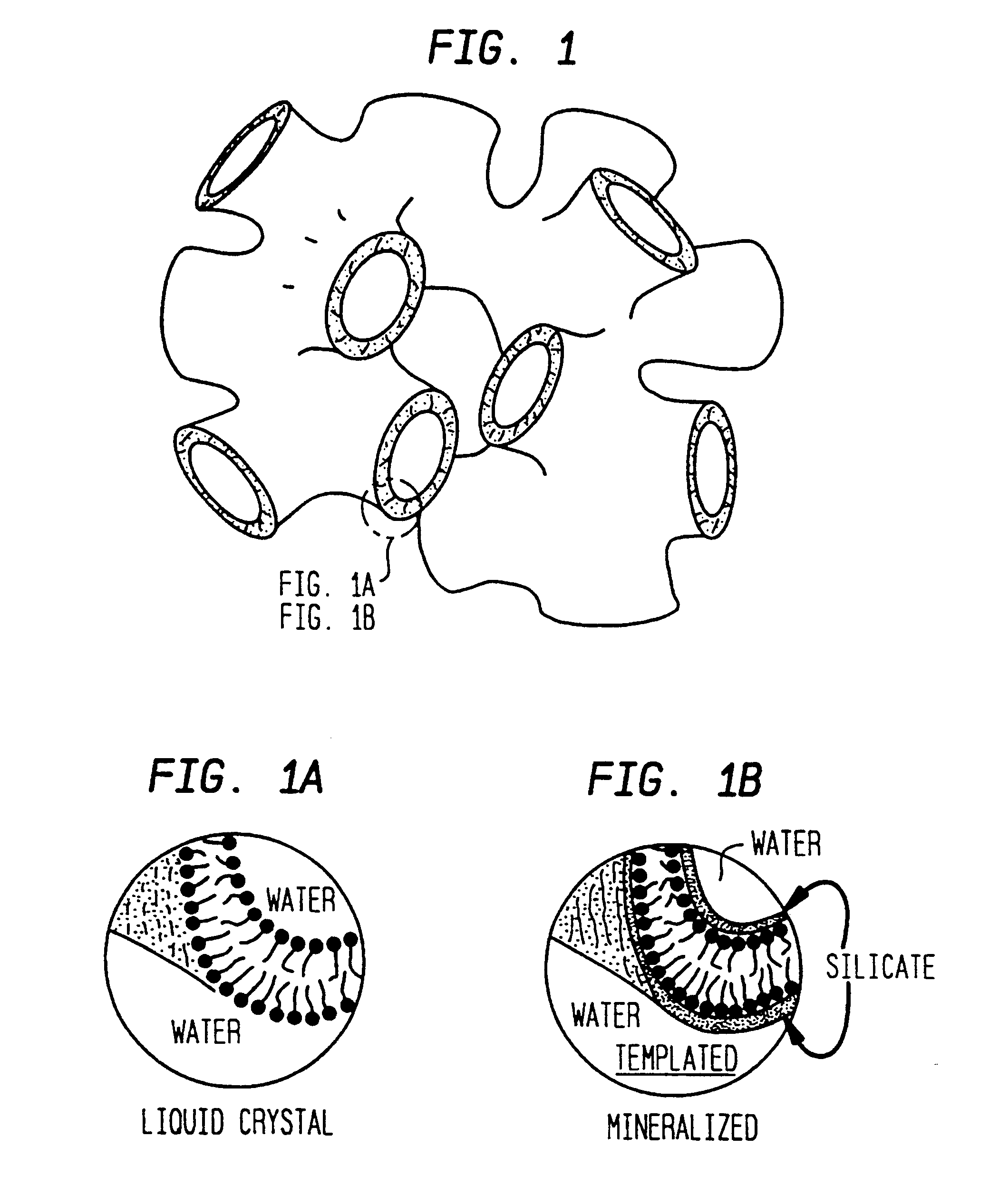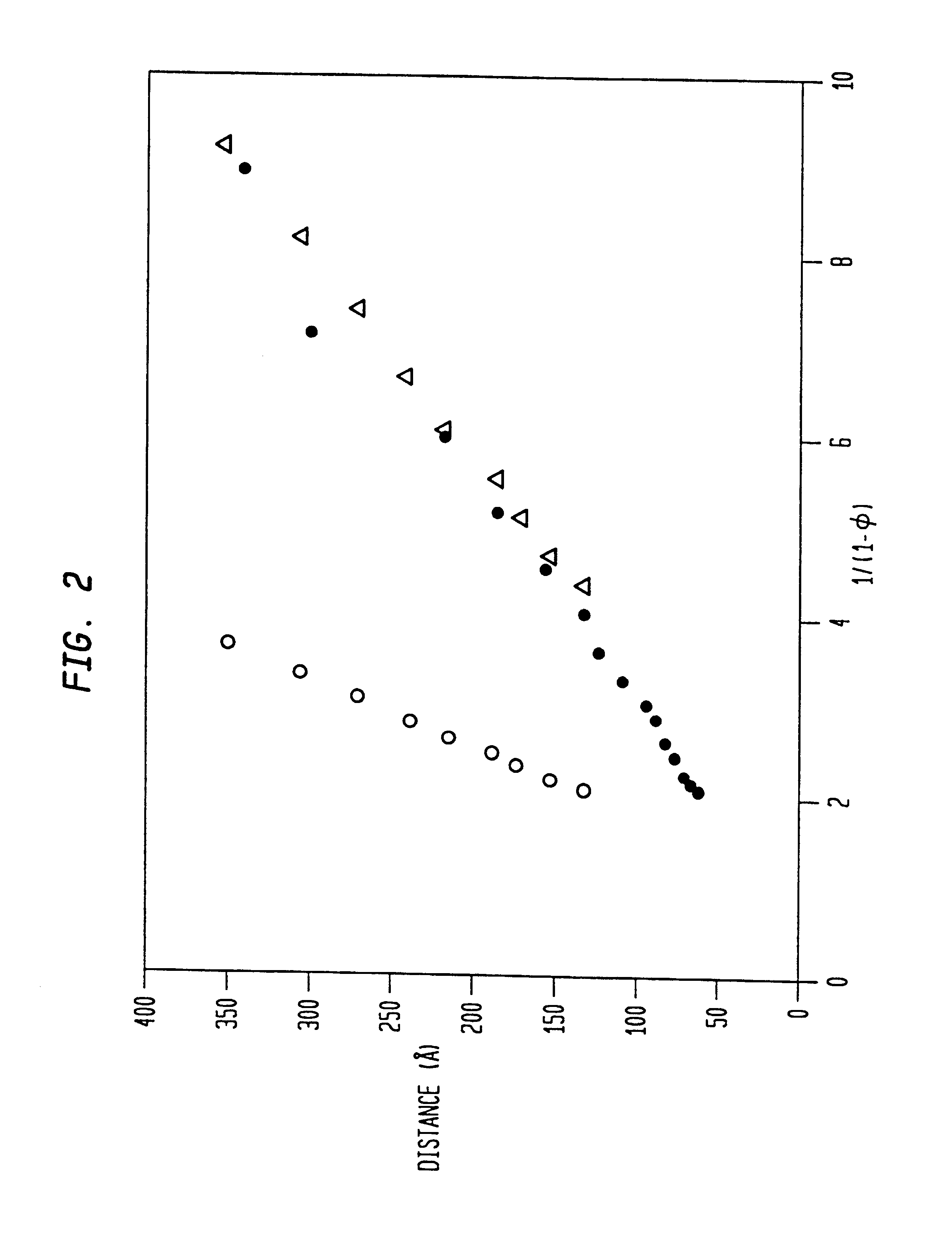Lyotropic liquid crystalline L3 phase silicated nanoporous monolithic composites and their production
a monolithic composite and liquid crystalline technology, applied in the direction of fixed capacitors, alkali metal oxides/hydroxides, molecular-sieve compounds, etc., can solve the problems of bridging the length-scale gap, considerable stumbling blocks, and limited materials
- Summary
- Abstract
- Description
- Claims
- Application Information
AI Technical Summary
Benefits of technology
Problems solved by technology
Method used
Image
Examples
Embodiment Construction
Materials
The L.sub.3 phase used in this invention is a thermodynamically stable phase composed of the surfactant cetylpyridinium chloride (CpCl, 1-hexadecylpyridinium chloride monohydrate, C.sub.16 H.sub.33 (N.sup.+)C.sub.5 H.sub.5 (Cl.sup.-).multidot.H.sub.2 O), the co-surfactant hexanol (C.sub.6 H.sub.13 OH, ca. 98% by GC), and hydrochloric acid (0.2 M, aqueous). Varying amounts of the 0.2 M hydrochloric acid `solvent` were used to prepare samples, ranging from 50% up to 95% by weight of the overall mixture. A fixed ratio of 1.15 (by weight) hexanol to CpCl was used in all samples except in the higher solvent contents (>90% by weight); in the latter solutions the hexanol:CpCl ratio was increased to 1.20. Throughout most of the solvent content range of interest, the L.sub.3 phase remains stable with respect to the solvent content; the phase field narrows and curves upwards when the solvent content exceeds 90% by weight (FIG. 2). K. M. McGrath, "Lamellar Phases in Surfactant Systems...
PUM
| Property | Measurement | Unit |
|---|---|---|
| pore size diameter | aaaaa | aaaaa |
| size | aaaaa | aaaaa |
| diameter | aaaaa | aaaaa |
Abstract
Description
Claims
Application Information
 Login to View More
Login to View More - R&D
- Intellectual Property
- Life Sciences
- Materials
- Tech Scout
- Unparalleled Data Quality
- Higher Quality Content
- 60% Fewer Hallucinations
Browse by: Latest US Patents, China's latest patents, Technical Efficacy Thesaurus, Application Domain, Technology Topic, Popular Technical Reports.
© 2025 PatSnap. All rights reserved.Legal|Privacy policy|Modern Slavery Act Transparency Statement|Sitemap|About US| Contact US: help@patsnap.com



